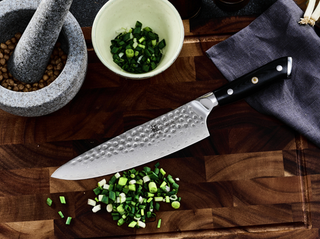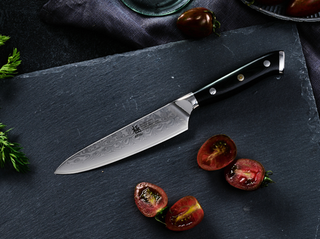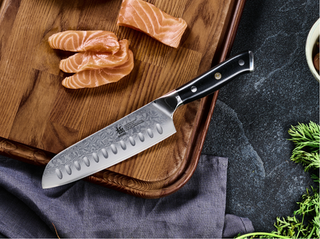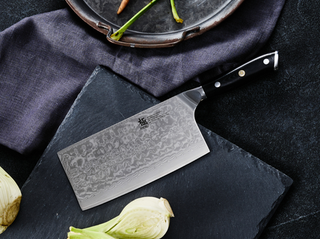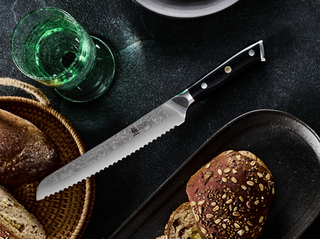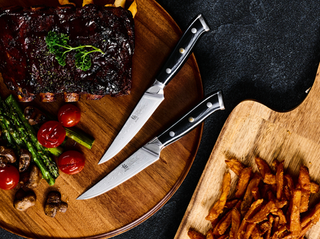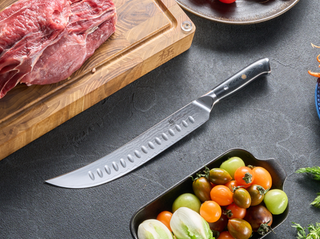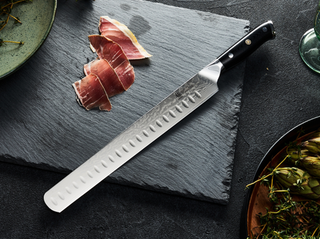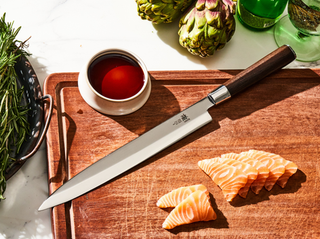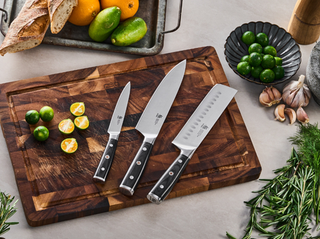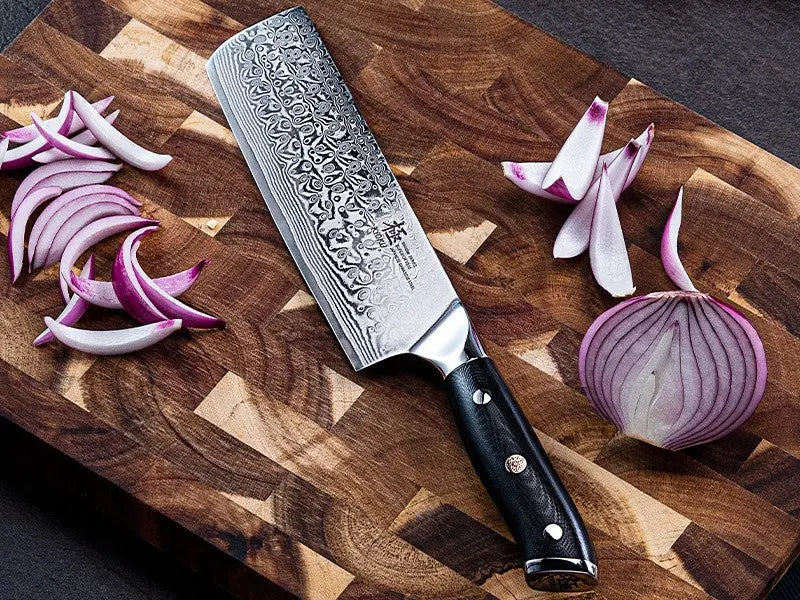What exactly is a Nakiri Knife? What’s special about it in dealing with vegetables? What to look for when choosing a Nakiri?
We’re going to answer all these questions here.
What is a Nakiri Knife?
Nakiri Knife is a Japanese kitchen knife designed for chopping vegetables and fruits, also suitable for cutting meat, bacon and noodles. Its size ranges from 29 to 32 cm. The length of a rectangular Nakiri blade is about 16-18 cm. It’s sharpened to 15 degrees, which allows you to cut food into thin slices.
Nakiri knives are characterized by high strength and sharpness, thanks to the hardness of the blade steel 58-61 HRC. They are similar to a Usuba, but smaller, lighter and therefore more convenient for nonprofessionals.

More than one type of kitchen knives can be used to work with vegetables, but a Nakiri, is what’s going to get you the best results. Nakiri knife stands out from other Japanese knives not only in size, but also in other unique features:
-Single-sided sharpening of the blade (there are instances with double-sided ones, they are no less traditional),
-An almost rectangular blade, sometimes with a slightly rounded edge,
-Quite heavy handle, providing the product with balance and ease of use.
-The blade, sharpened on one side only, makes it easy to chop and cut even very hard food into thin slices. After all, the angle of its sharpening is only 15 degrees, and in some cases only 5-6.
Why choosing Nakiri Knife?
Many experts choose Nakiri knife, instead of its European counterparts, for several reasons:
-One-sided sharpening of the blade can be on the right or on the left, which makes it possible to choose a comfortable product for left-handers and right-handers.
-Vegetable slices can be of any kind. The thinnest slices and thick bars come out equally well, everything turns out with a smooth, beautiful cut.
-The knife blade enters the pulp easily, without great effort, regardless of the hardness of the product. This allows you to get the job done quickly and not get tired.
-They can grind meat, fish, even lard. Just don't work with frozen foods.
-Slices and cubes look very aesthetically pleasing, there are no shaggy edges, drips of juice, crushed areas. With the help of Nakiri knife, you can chop tomatoes, grapes or plums, which have a dense skin and a very delicate pulp.

-The technique of working with this knife saves space in the kitchen and can be used on a small cutting board. They do not need to be moved back and forth, you can just press the vegetable with the blade. Or they choose only one direction - in front of themselves, towards themselves, the quality wont be affected from this.
-The knife is safe despite its size. He is held so that the hand cannot be injured. And control over the tool remains, especially since they work with a minimum range of motion.
-The high-carbon steel blade does not dull for a long time. And if it has lost its sharpness, you can sharpen it with water stones.

What to look for when choosing a Nakiri Knife?
Material
Among all kinds of materials, stainless steel, carbon steel, and damascus steel are most commonly used ones. Stainless steel requires less maintenance and stays sharp and sturdy for a long time. Thus it’s a popular option here.
Adding carbon to steel helps it stay stronger for longer. This way we have carbon steel. As consequence, it takes more time and effort for maintenance.
Another popular choice nowadays would be Damascus steel, featuring a carbon core and a stainless steel exterior. It combines the flexibility of stainless steel and hardness of carbon steel.
Size
For a Nakiri, 7” will do just fine. Lager ones could be cumbersome while smaller ones sometimes doesn't meet the need.
Weight and balance
Generally speaking, Japanese knives have thinner blades than than western ones. Nakiri, as one of the typical Japanese knives, is no exception. However, a quality knife should always feels substantial.
The other key factor to consider would be the balance of a knife, or weight distribution. Holding a well-balanced knife, you wont find your hand tilting towards one side. A knife without good balance may cause discomfort and even danger. That being said, it's important to try it yourself to make sure a knife fits you.
These're some of the most important factors to consider when choosing a Nakiri Knife. We hope it gives you a general idea of it and helps you pick the right one.
